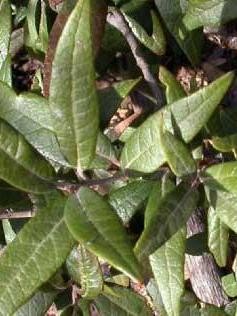Silverleaf oak
(Quercus hypoleucoides)

Description
Quercus hypoleucoides, the silverleaf oak or the whiteleaf oak is a North American species of trees or shrubs in the beech family. It grows in the southwestern United States and northern Mexico. Quercus hypoleucoides, though usually seen as a shrub, can be found to be a full-sized tree, 30 feet (9 meters) tall in areas where it receives sufficient water. Quercus hypoleucoides can be distinguished from other oaks by its lanceolate leaves which are dark green on top but silver white on the lower surface. Quercus hypoleucoides produces its flowers in the spring as most plants do. It grows in warm regions and is used as an ornamental due to its unusual foliage. Its species name, hypoleucoides, means "white underneath" and also happens to be the main way that it is distinguished from other oak trees. This species has acorns which are eaten by both squirrels and birds and even at times by humans. However, before it is safe for people to eat, the tannic acid must first be leached out due to its toxic qualities. Bark: Is dark gray in color. It is thin with shallow, lighter-colored fissures and narrow ridges. Twig: Reddish brown in color and are broadly triangular with a sharp point. Are slender to moderate, generally with white fuzz. The end buds are clustered. Leaves: Are alternate, evergreen, simple, and narrowly oblong to lanceolate. They are usually 2 to 4 inches (5–10 cm) long, with edges revolute. Occasionally there are a few shallow teeth, a narrow pointed tip, and a leathery texture. They are usually a shiny yellow-green on top and white or silvery on the bottom. Fruits: Oblong acorn that is 1/2 to 3/4 inch long. The cap is scaly bowl-shaped and covers 1/3 of the nut which ripens in 1 (or 2 seasons), maturing in early fall. Flowers: Quercus hypoleucoides is a monoecious plant and therefore both male and female flowers grow on the same plant. This is opposed to dioecious plants where male flowers and female flowers grow on separate trees. The male flowers form long drooping catkins that are yellow-green in color. The female flowers have very small spikes in leaf axils that appear with the leaves. Form: Though usually found as a shrub, given enough moisture it can become a medium-sized tree that reaches up to 60 feet (18 meters) tall with a spreading round crown.
Taxonomic tree:







